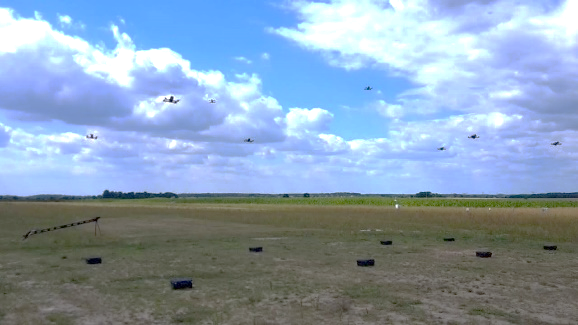ESTABLIS-UAS (Exposing spatio-temporal Structures of Turbulence in the Atmospheric Boundary Layer with In-Situ measurements by a fleet of Unmanned Aerial Systems)

Picture rights: Norman Wildmann.
The atmospheric boundary layer (ABL) is the lowest part of the atmosphere, which is directly influenced by the earth surface. Here, what is recognized as wind, influences our every-day life in multiple ways. Exchange and transport processes in the ABL are driven by turbulence on a wide range of scales. Their adequate parameterization in numerical models is essential for a high predictive skill. In heterogenous and complex terrain, the common simplification of turbulence to statistical (one-dimensional) models does not necessarily hold. Coherent structures such as convective cells, gusts, slope and valley flows but also turbulence in cities or behind wind turbines are structures which are not well represented in models. A reason for the lack of understanding of these flow features is the challenge to adequately sample their spatio-temporal structure and their contribution to the energy budget of the ABL.
The project ESTABLIS-UAS will provide methods to expose spatio-temporal structures in the ABL with in-situ measurements by a fleet of unmanned aerial systems (UAS). For this purpose, small, rotary-wing UAS will be enabled to measure three-dimensional wind, temperature and humidity in organized, spatially distributed networks. The project will include a three-fold approach to validate single UAS measurements, fleet observations and methods to derive spatial averages and fluxes. Wind tunnel tests at the facilities of the University of Oldenburg (DLR partner in wind energy research), field validation in the research wind park Krummendeich (WiValdi) and virtual measurements in numerical simulations will be performed.
The validated UAS fleet will be deployed in two campaigns in the framework of the international TEAMx research programme, focusing on the mountain boundary layer (MoBL), which is particularly complex. The ESTABLIS-UAS measurements will fill observational gaps in the sub-mesoscale. The analysis of the UAS fleet data in synthesis with ground observations and remote sensing will provide unprecedented new insights into the complex MoBL flow and the components of its energy budget. The results will foster the development of new and better parameterization of turbulence in the ABL.
ESTABLIS-UAS is a 5-year project funded through an ERC Starting Grant and is led by Norman Wildmann at DLR.

